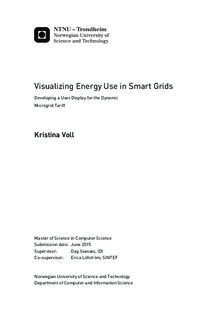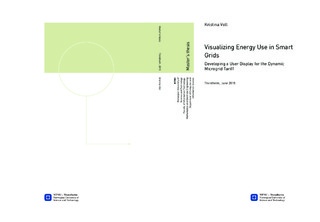| dc.description.abstract | Increasing demands for energy in Norwegian households are stretching the capacity of the electrical grid to its limits. To avoid having to expand the electrical grid, peak loads must be reduced, and power companies are dependent on energy consumers to distribute their energy use more evenly throughout the day. Smart Meters are to be installed in every Norwegian household within January 1st, 2019, and can help provide customers with the information and control needed in order to achieve peak reductions.
Demo Steinkjer is a national project testing new solutions for energy usage, and is currently running a project testing a tariff which focuses on increasing electricity prices when the grid is heavily loaded. They plan to use a tablet display to inform users about consumption and pricing. However, it is not determined what kind of, and how, this information should be communicated.
This thesis explores how such a display tool should be developed in terms of context of use, user requirements, and design. Based on findings obtained from literature reviews, a survey and a focus group, a prototype has been developed and tested on potential users. The re- search has been carried out following the Design and Creation strategy and Human-centered design for interactive systems.
The research showed that a majority of our participants to a little extent reflect upon their energy consumption. However, many expressed a willingness to adapt their energy consumption according to information given to them. In order to take action, users should be provided with concise information, and a visualization of energy consumption should focus on readability rather than detail in data. Test participants found the display tool useful for handling the tariff and gaining better control of their energy consumption and costs. Appliance control, preferably automatic, was considered the most interesting and useful feature.
A display tool should cover the needs of its potential users, and not simply force them into solving the needs of the power companies. Users show willingness to change behavior and adopt new technology, but only if they are provided with the appropriate tools that help them achieve their goals in their everyday lives. | |

